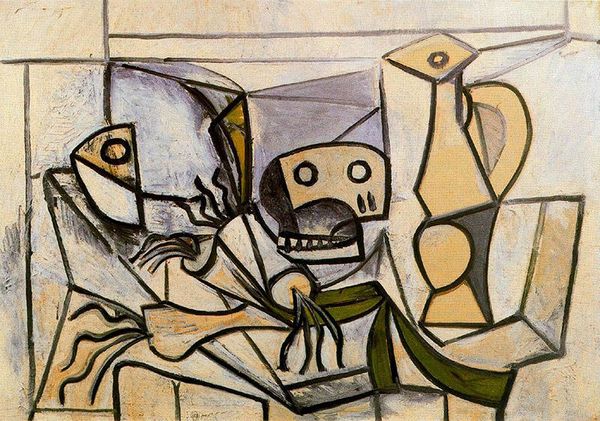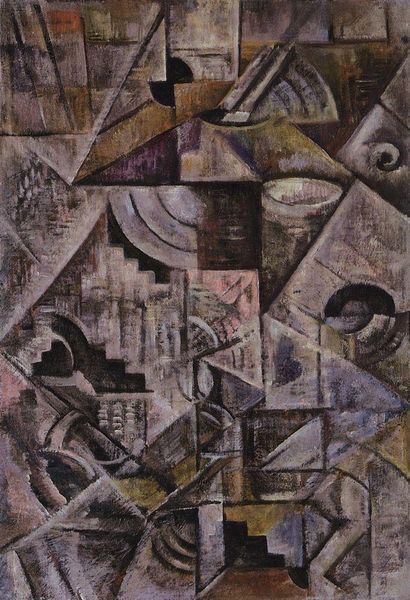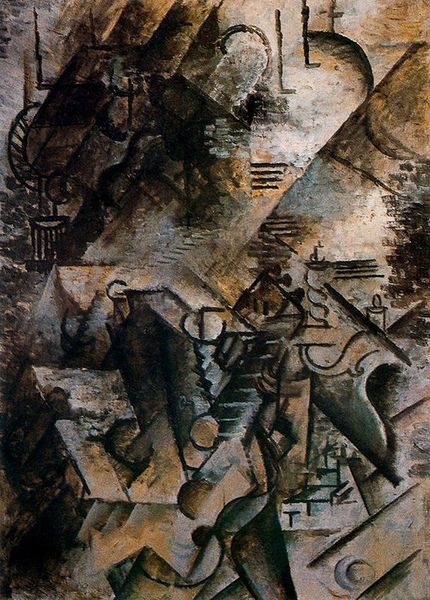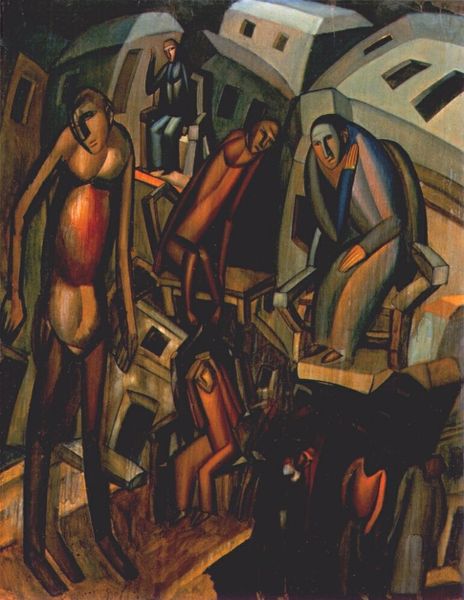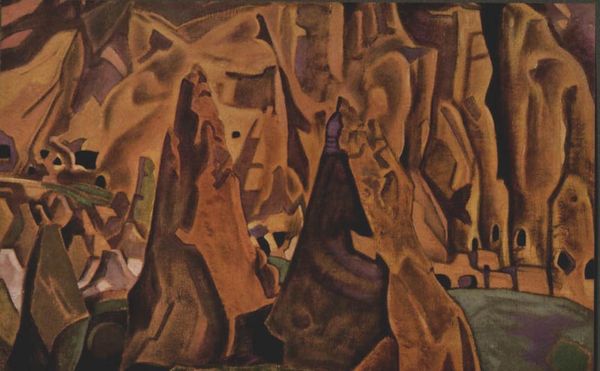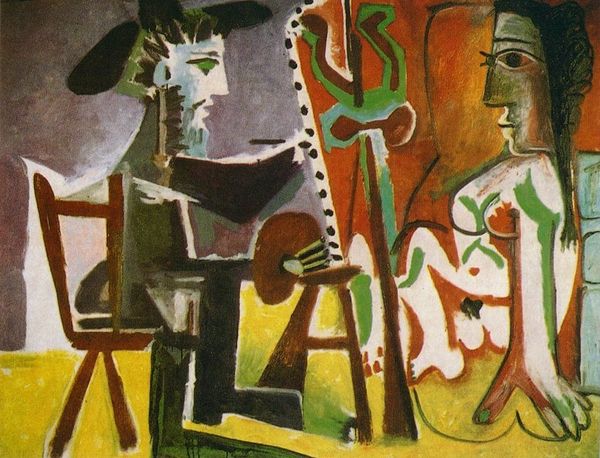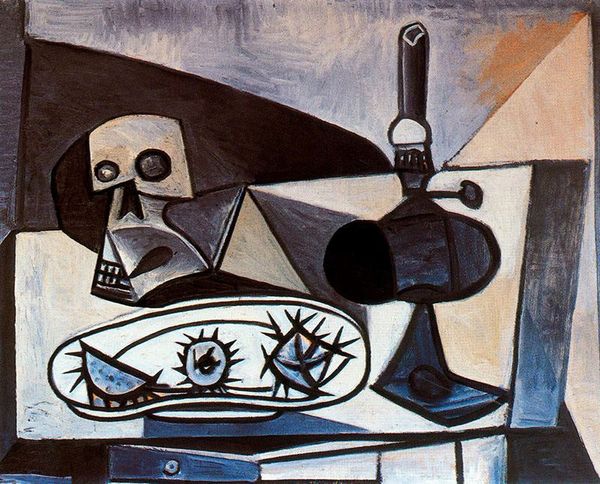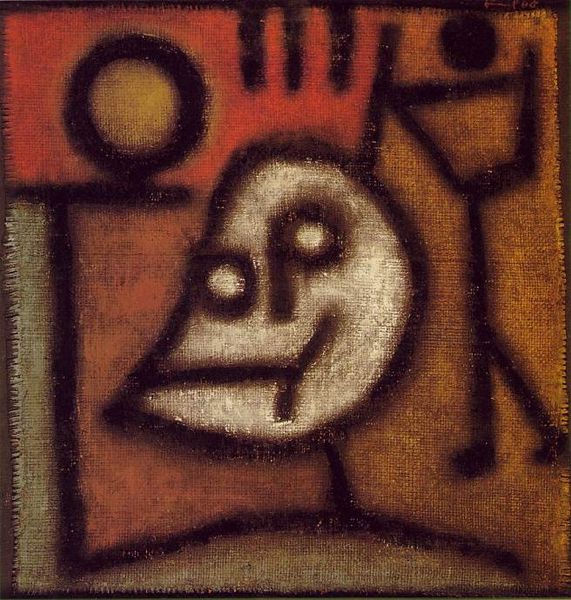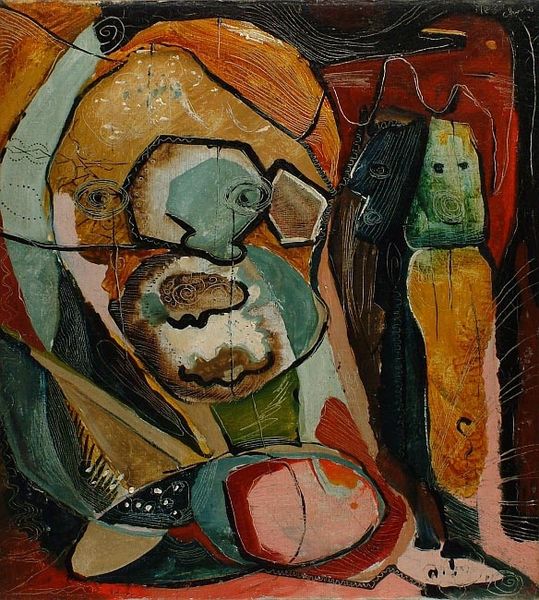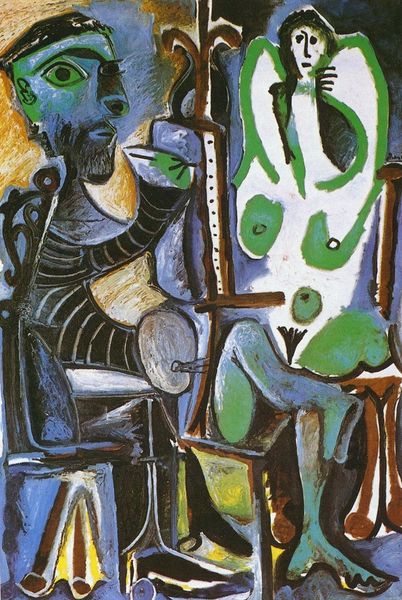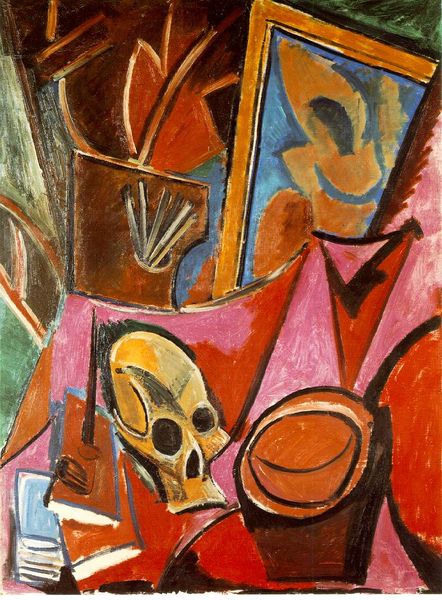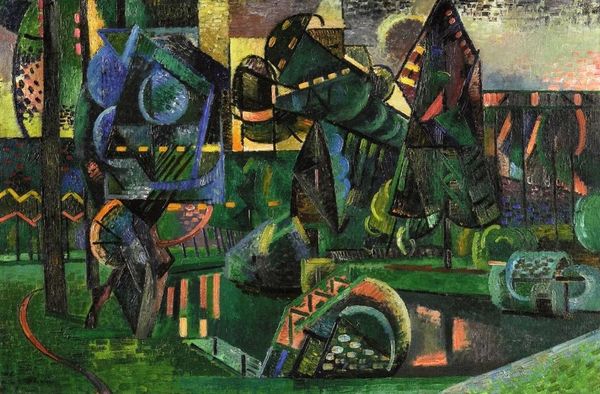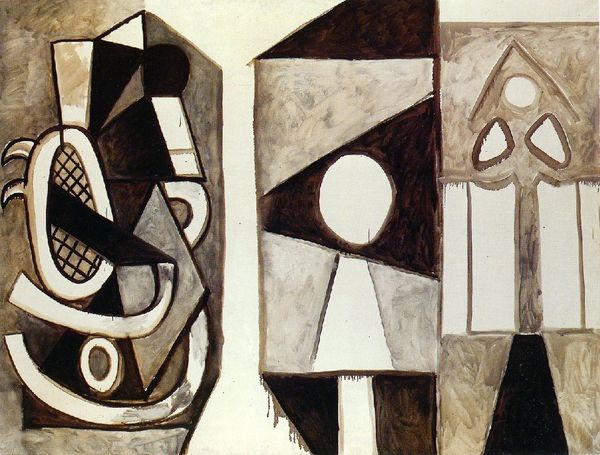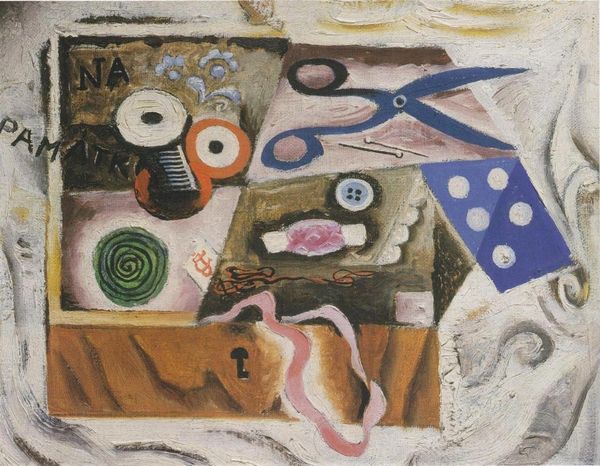
mixed-media, matter-painting, fumage
#
mixed-media
#
matter-painting
#
fumage
#
abstraction
#
mixed media
#
modernism
Copyright: Jean Dubuffet,Fair Use
Editor: Looking at this piece, "Smoking Cherries" by Jean Dubuffet, which seems to be a mixed-media work perhaps using "matter painting" techniques, I find myself drawn to the ambiguity. It feels chaotic yet controlled, if that makes sense. I wonder, what social narratives do you think Dubuffet is trying to engage with here? Curator: The notion of "chaos" as controlled really resonates. Dubuffet's work, especially his "matter paintings," often challenged conventional beauty standards. In the post-war era, the focus shifted toward materials that carried more symbolic weight – earthy, raw, almost "ugly." How do you think the incorporation of materials and fumage might challenge perceptions of elitist, or "high" art? Editor: I see what you mean. It is almost aggressively anti-glamour. The roughness feels like a deliberate rejection of refinement. It makes you question what art should even be about. Do you think the imagery relates to social class? Curator: Absolutely. There's an anti-establishment stance embedded here. The "everyday" materials, even refuse, used in his work directly critiqued the art world's obsession with luxury and polish. Consider the post-war sentiment: a need to rebuild, a disillusionment with pre-war values. Do you read this anti-establishment position as social critique, political commentary, or something else? Editor: I think it's a combination. The fact that he uses smoke to create texture is interesting. Is there any symbolic intention behind using something as volatile as smoke? It might be an anti-establishment stance, perhaps? Curator: Yes, think about impermanence, the fleeting nature of life and the ephemerality of art itself. It becomes a political gesture – rejecting the idea of art as a static, timeless object. That volatility suggests a resistance to fixed meaning, aligning with post-structuralist thought. What does this idea of impermanence, resistance, and volatility signify for contemporary practices? Editor: I'm starting to see how his choice of materials and process directly reflect a wider social and political unease. I will think of this approach in relation to social identity when viewing other works of art. Thanks. Curator: Indeed. Hopefully, this inspires thinking beyond aesthetics to broader contextual relevance of "ugliness" and how artists reclaim spaces and narratives!
Comments
No comments
Be the first to comment and join the conversation on the ultimate creative platform.
